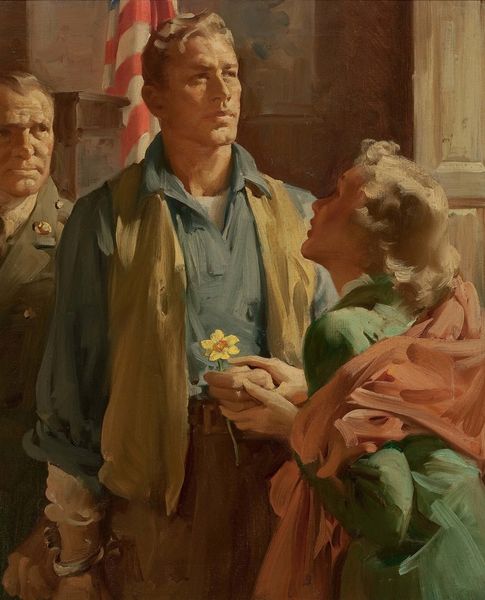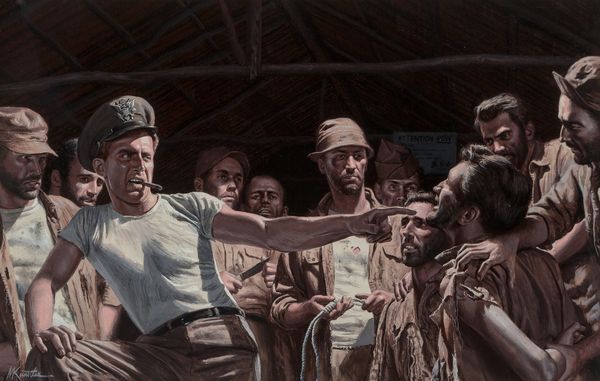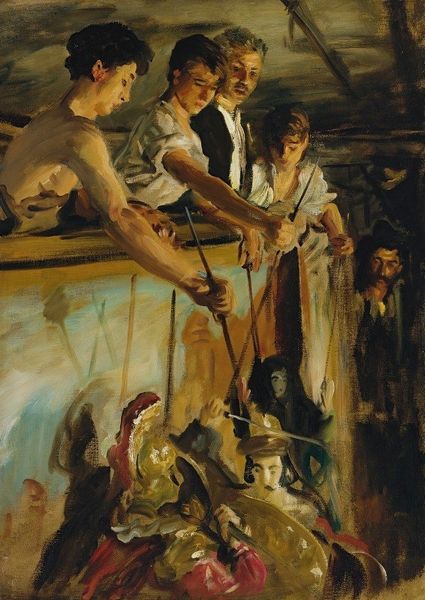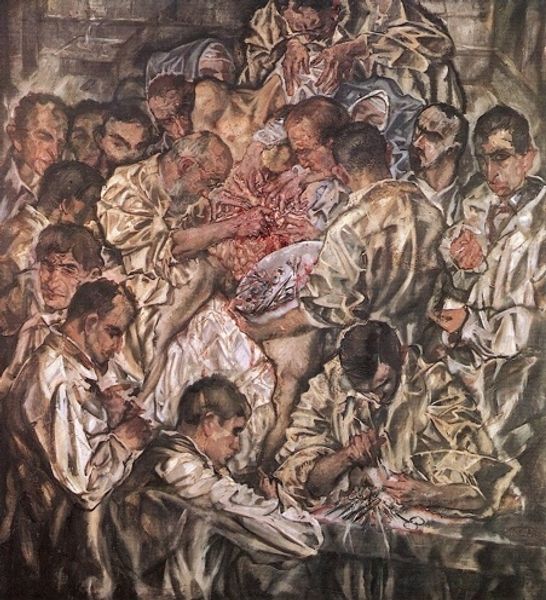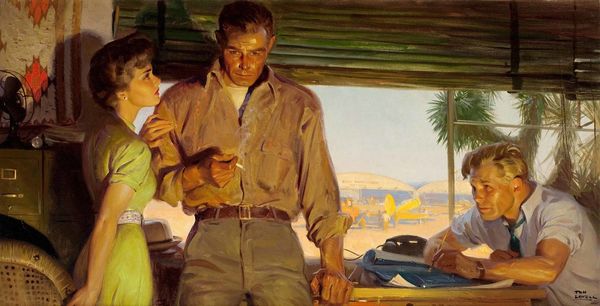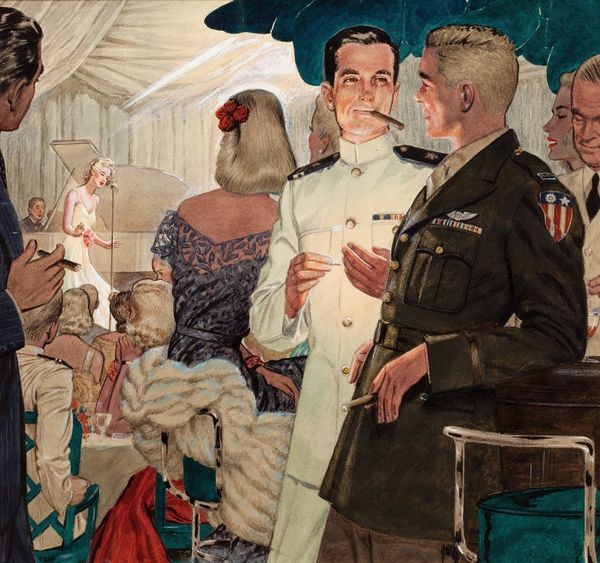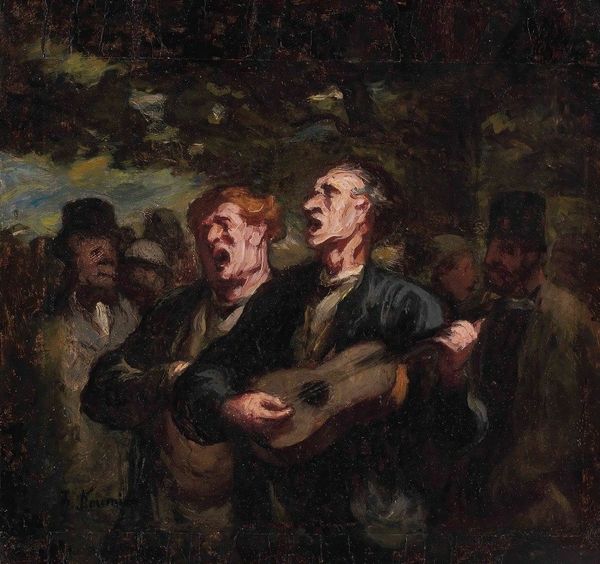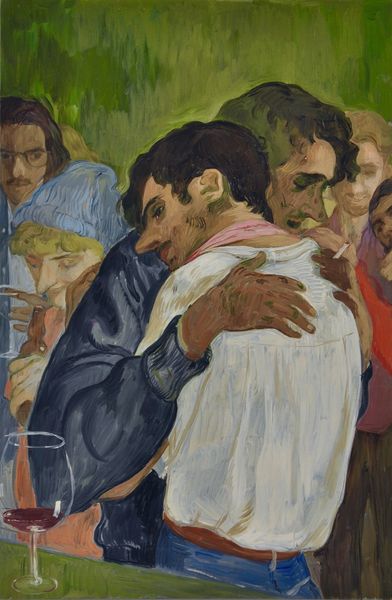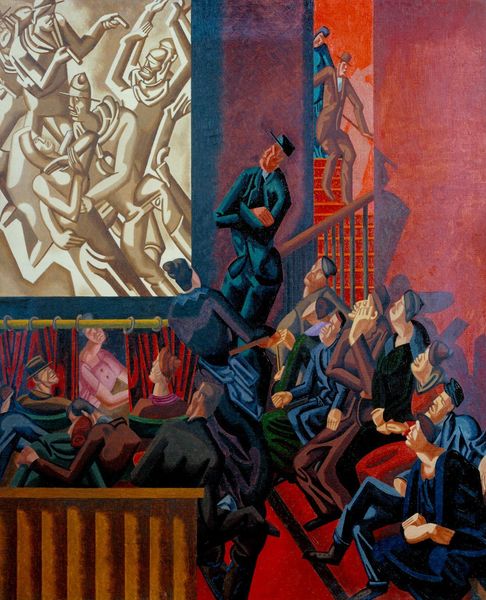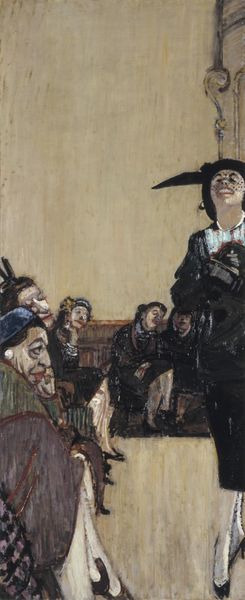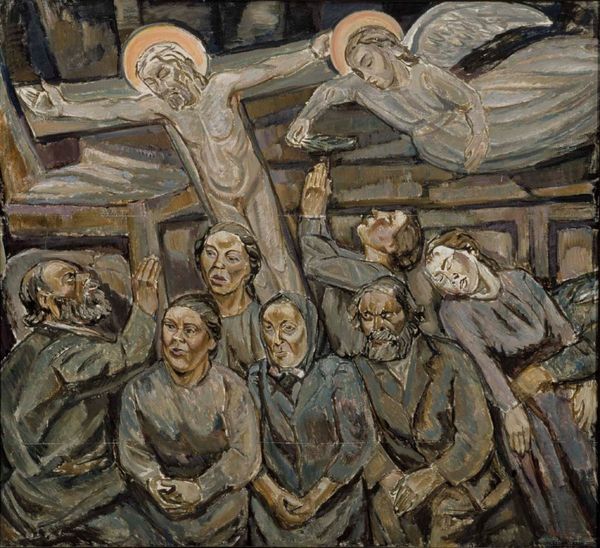
painting, oil-paint
#
narrative-art
#
painting
#
oil-paint
#
oil painting
#
group-portraits
#
history-painting
#
modernism
#
realism
Copyright: Modern Artists: Artvee
Curator: Norman Rockwell’s “The Long Shadow of Lincoln, study for story illustration,” created around 1945, is an oil painting that depicts a dense crowd of figures surrounding a central figure sitting atop what appear to be grave markers. Editor: The somber mood is immediate, isn't it? The tonal range feels limited and dark, like a faded photograph. And what's striking is the compression of all those bodies—so little breathing room given the solemn occasion. Curator: Indeed. Compositionally, Rockwell has opted for a high degree of saturation; almost no negative space. It feels psychologically claustrophobic, mirroring the emotional weight suggested by the title. The repetition of the white crosses emphasizes themes of sacrifice and mourning. Editor: But look at the array of labor represented! We've got white collars alongside farmers and a uniformed serviceman, seated no less. This isn’t just about loss, it feels like a cross-sectional representation of American society reckoning with the impact of war. What was sacrificed goes well beyond life and limb; it includes social order itself. Note the almost hidden carpenter to the bottom. Is that to further enhance the ideas surrounding labor and sacrifice through the image of a worker building or maintaining those crosses? Curator: Fascinating. Semiotically, the artist sets up clear signifiers: Lincoln is embodied by the legacy and ideas he represents for the serviceman. Lincoln’s ideology becomes the bedrock—almost literal—for reconstruction after such a massive upheaval. That Rockwell chooses to represent it in oil is appropriate, lending a weighty materiality to this burden. Editor: Oil was definitely Rockwell’s chosen medium. In addition to paintings, he made hundreds of illustrations, and illustrations require a different sensibility than traditional fine art; reproduction and consumption. Rockwell’s practice suggests a fluid movement of art, mass production, and reception during wartime. He makes it accessible through those qualities. I do think Rockwell uses "history painting" with a new intention in this piece. Curator: So, you're saying this is about the burden and responsibility thrust upon all sectors, classes and genders, after this watershed war, rather than valorization. Editor: Precisely. Rockwell here presents not an idealized narrative, but the complex burden collectively borne, etched into the materiality of this work itself through rough brushstrokes and dense layering. Curator: Food for thought, definitely shifting my perspectives on how Rockwell addresses history here. Thank you. Editor: Likewise; the layers in this painting revealed a narrative far beyond my first impression!
Comments
No comments
Be the first to comment and join the conversation on the ultimate creative platform.
